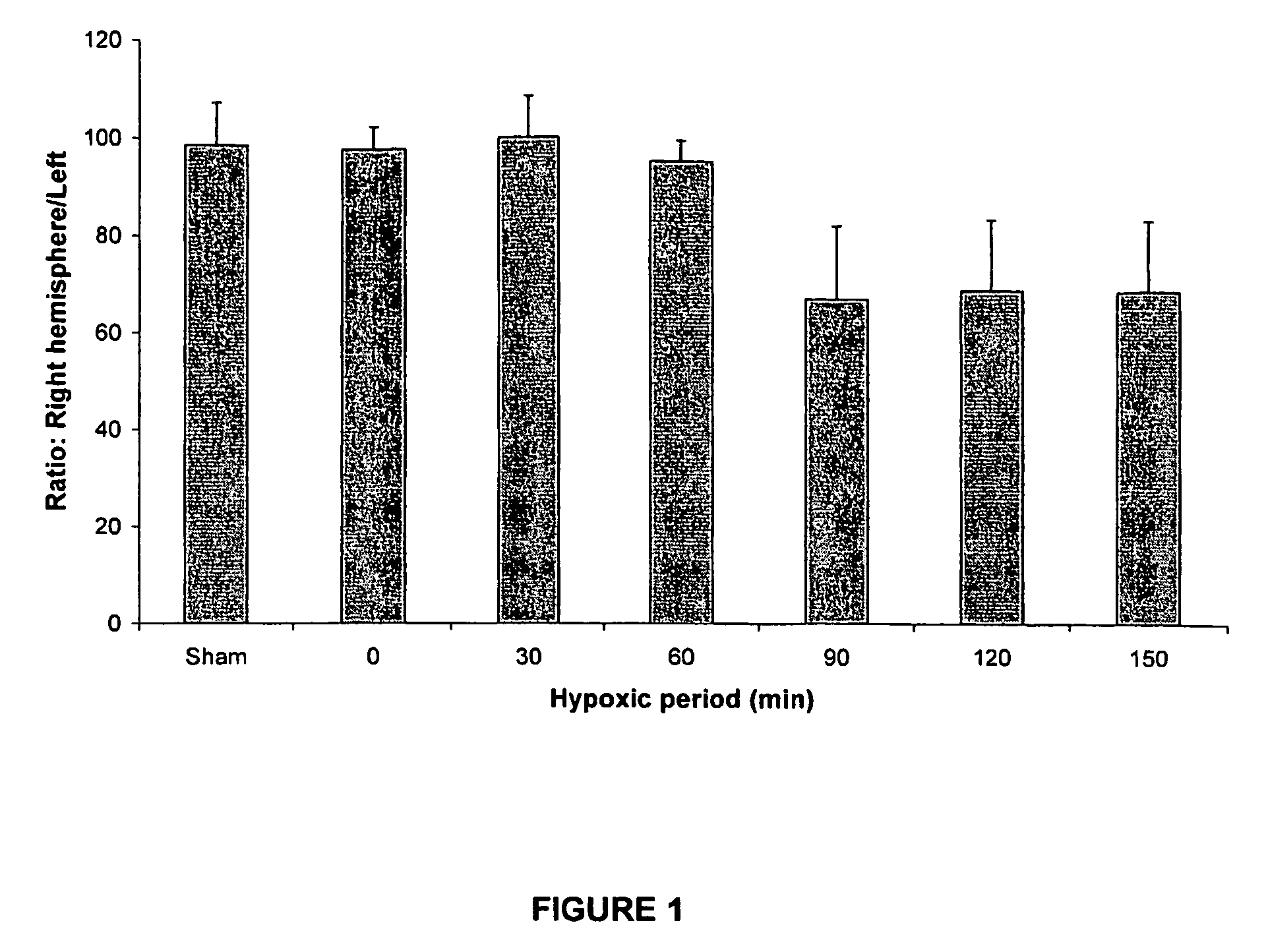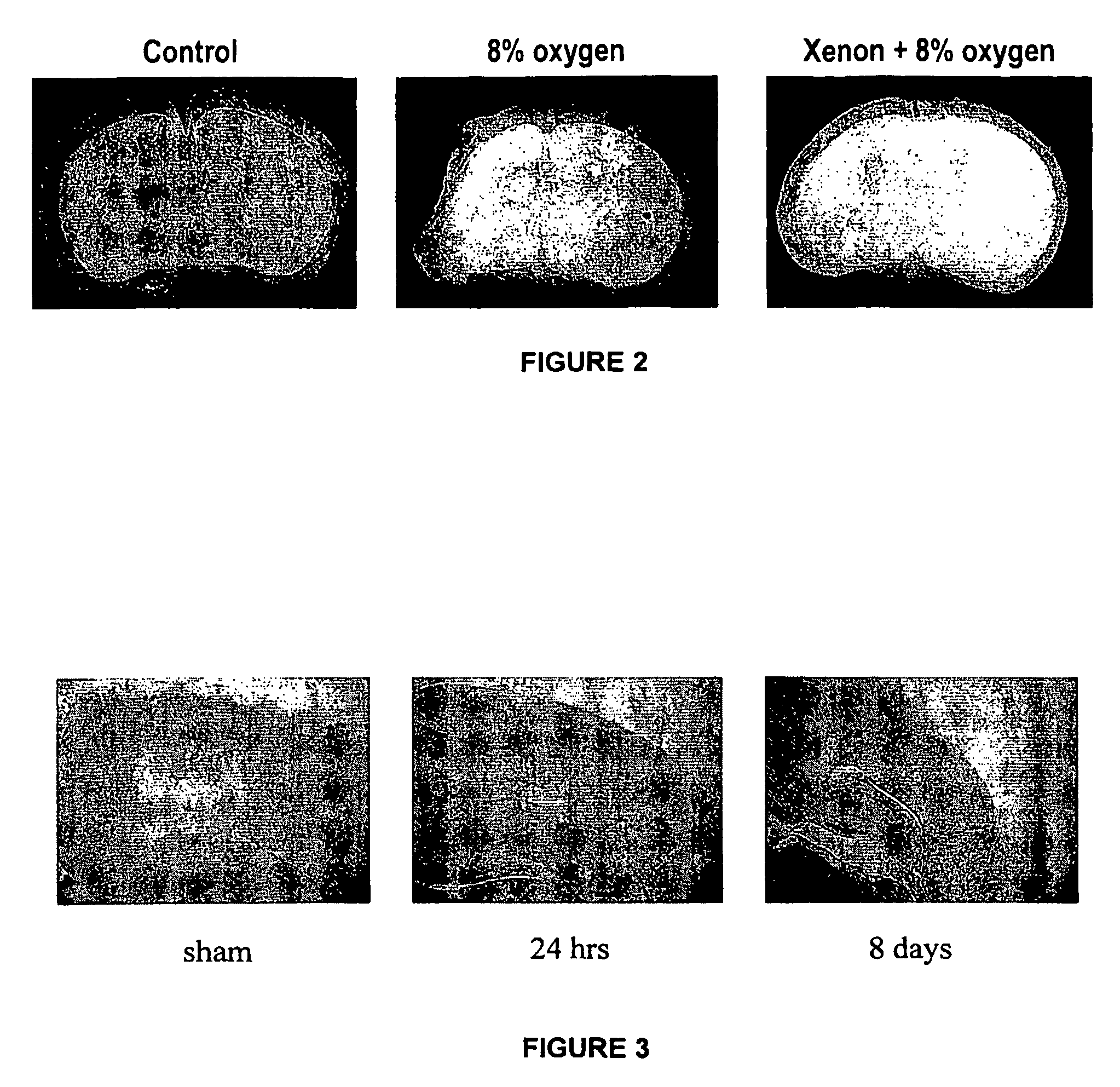Use of xenon with hypothermia for treating neonatal asphyxia
a technology of neonatal asphyxia and xenon, which is applied in the direction of biocide, cardiovascular disorder, drug composition, etc., can solve the problems of life-threatening, permanent neurological damage, serious debilitating disease, behavioral problems,
- Summary
- Abstract
- Description
- Claims
- Application Information
AI Technical Summary
Benefits of technology
Problems solved by technology
Method used
Image
Examples
example 1
Neonatal Asphyxia Model
[0131]Seven day old postnatal Sprague-Dawley rats underwent right common carotid artery ligation under surgical anaesthesia (1%-1.5% isoflurane in pure oxygen). After ligation, the animals were returned to their mothers and placed in a specially designed area with constant of room temperature (23° C.) and humidity (48%). One hour after surgery, neonatal rats were placed in specially designed chamber with 8% oxygen combined with 0, 20, 40, 60 or 70% Xenon (with nitrogen making up the balance) for 90 min at 37° C. (temperature kept by water bath running outside chambers). At post-experimental day 7, rats (14 day old) were killed and their brains removed. The ratio of right hemisphere weight against left (R / L ratio) was calculated. Rat pups in some groups were allowed to live up to 30 days of postnatal age, at which time their neuromotor function and co-ordination were assessed with established protocols (Neuromotor testing and Rotarod testing).
[0132]The results ...
example 2
Materials & Methods
[0141]This study conformed to the United Kingdom Animals (Scientific Procedures) Act of 1986 and was approved by the Home Office (U.K.).
Animal Model of Hypoxia-Ischaemia
[0142]This study used a 7-day-old (p7) rat model of focal HI in which the pattern of brain injury resembled that of hypoxic-ischemic injury in the term human neonate (Johnston, 1983).
[0143]p7 Sprague-Dawley rat pups (weighing between 10 and 14 g) from Harlan, U.K. were subjected to a previously described model of HI injury (Levine, 1960; Rice et al, 1981). In brief, rat pups were anaesthetised with 2% isoflurane before undergoing permanent unilateral ligation of the right common carotid artery, using a midline neck incision and 5.0 silk suture. Once surgery was complete, pups recovered from the anaesthesia and were then returned to the dam until the time of experimentation.
[0144]1 hr after surgery, pups were exposed to hypoxia by placing them into purpose-built, airtight chambers that were partiall...
PUM
 Login to view more
Login to view more Abstract
Description
Claims
Application Information
 Login to view more
Login to view more - R&D Engineer
- R&D Manager
- IP Professional
- Industry Leading Data Capabilities
- Powerful AI technology
- Patent DNA Extraction
Browse by: Latest US Patents, China's latest patents, Technical Efficacy Thesaurus, Application Domain, Technology Topic.
© 2024 PatSnap. All rights reserved.Legal|Privacy policy|Modern Slavery Act Transparency Statement|Sitemap



